Dispersions & Resins
Let’s shape the future with upcycling
Latest News & Stories
Sustainability in action: BASF’s fiber bonding technology enabling circularity
Sustainability in action
As earth’s resources are limited, it is key that we must reduce, reuse, and recycle waste. Furthermore, we need to transform the way we live—and do business. The circular economy aims to reduce the resources we consume. To this end, we are exploring a three-tiered approach of adopting new feedstocks, creating new material cycles and engaging into new business models. This approach will help us contribute to closing and extending the loops by developing and implementing circular solutions for the materials we source.
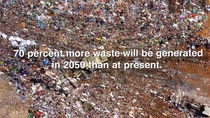
OUR AMBITIOUS GOAL:
BECOMING CO2 NEUTRAL
BY 2050
Sustainability at heart
For us at BASF, sustainability is a key component of our core identity. In fact it is something at the heart of our slogan: “We create chemistry for a sustainable future.” Putting out principles into action, we incorporate sustainability into our products and solutions whenever possible and have adopted a very ambitious sustainability target: to become CO2 neutral by 2050.
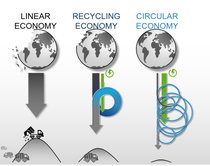
Going up starts by going down
It’s imperative that we move away from the linear “take-make-dispose” cycle and toward closed loops powered by renewable energy. Recycling, for example, is generally considered a closed loop. Here, products are reused and recycled, but retain their original shape and use, thus reducing waste to a minimum. Upcycling on the other hand is an open loop. Waste products that cannot be recycled are transformed into higher quality items used in a broader range of applications.
Upcycling: Moving forward by going up
Upcycling is the opportunity for various industries to turn their waste into raw key materials to create new beautiful products. Openening up new product loops and opportunities. Again and again. Upcycling can reduce CO2 and protects the important ressources of our planet.
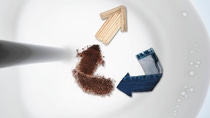
Upcycling as open loop
By upcycling reclaimed materials, like denim and clothes, and discarded materials, like spent coffee grounds, brewer’s grains, used paper cups and chopsticks, we extend the life cycle of these materials and give them new life as the building blocks for scores of new and more-valuable products. Furthermore, upcycling decreases our reliance on scarce natural resources, such as wood, while we can reduce CO2 by binding it in long-lasting products.
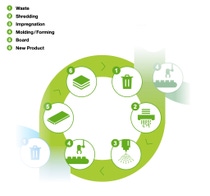
New resources: new opportunities
.jpg)
New resources
Upcycling is considered an open loop cycle, where waste products are not only reused, but are transformed into higher quality items used in a broader range of applications. Along with our partners, we have processes to upcycle coffee grounds, spent grain, denim, chopsticks and paper cups into tables, guitars and flooring.
By extending the life cycle of single-use materials, we not only keep them from ending up in landfills and incinerators, but we are also able to reduce the amount of new raw materials entering production cycles.
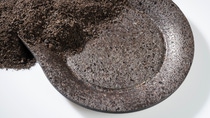.jpg)
New opportunities
The goal of upcycling is preventing the typical end point for most products: Incineration or landfill. Therefore, upcycling is an opportunity for various industries to transform their waste (e.g. coffee grounds or denim) into key raw materials in the board production process and reduce reliance on wood.
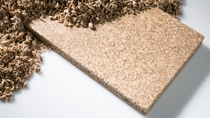.jpg)
Enabled through BASF's binders
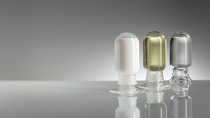
Let's talk!
Showcases: Proof of Concept

Furniture
spent coffee grounds

Music instruments
spent coffee grounds, denim and chopsticks

Flooring
spent coffee grounds, paper cups and reclaimed denim

Accessoires
spent coffee grounds, paper cups and reclaimed denim
Like it?
We're happy to receive your request.






